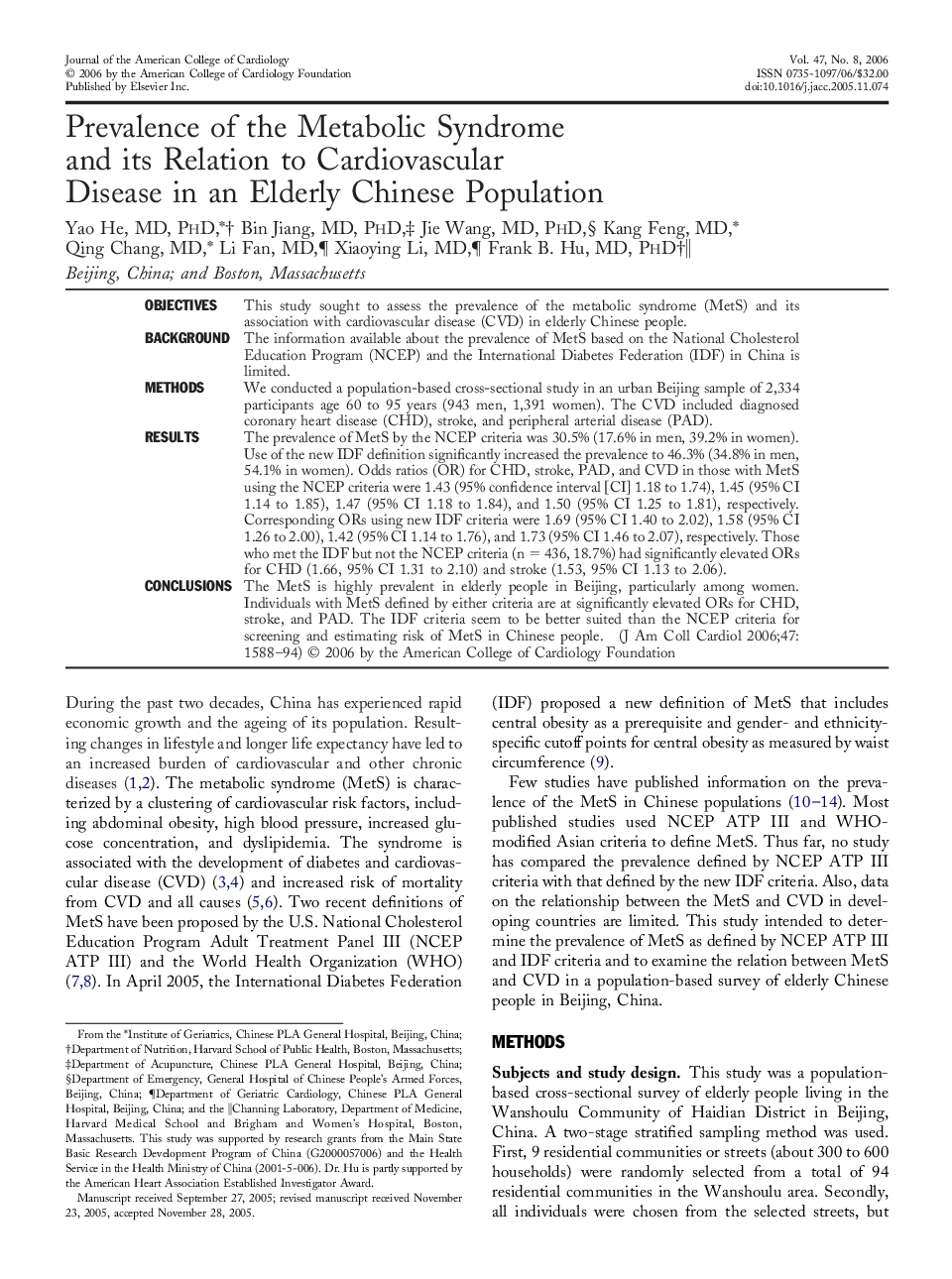| Article ID | Journal | Published Year | Pages | File Type |
|---|---|---|---|---|
| 2952323 | Journal of the American College of Cardiology | 2006 | 7 Pages |
ObjectivesThis study sought to assess the prevalence of the metabolic syndrome (MetS) and its association with cardiovascular disease (CVD) in elderly Chinese people.BackgroundThe information available about the prevalence of MetS based on the National Cholesterol Education Program (NCEP) and the International Diabetes Federation (IDF) in China is limited.MethodsWe conducted a population-based cross-sectional study in an urban Beijing sample of 2,334 participants age 60 to 95 years (943 men, 1,391 women). The CVD included diagnosed coronary heart disease (CHD), stroke, and peripheral arterial disease (PAD).ResultsThe prevalence of MetS by the NCEP criteria was 30.5% (17.6% in men, 39.2% in women). Use of the new IDF definition significantly increased the prevalence to 46.3% (34.8% in men, 54.1% in women). Odds ratios (OR) for CHD, stroke, PAD, and CVD in those with MetS using the NCEP criteria were 1.43 (95% confidence interval [CI] 1.18 to 1.74), 1.45 (95% CI 1.14 to 1.85), 1.47 (95% CI 1.18 to 1.84), and 1.50 (95% CI 1.25 to 1.81), respectively. Corresponding ORs using new IDF criteria were 1.69 (95% CI 1.40 to 2.02), 1.58 (95% CI 1.26 to 2.00), 1.42 (95% CI 1.14 to 1.76), and 1.73 (95% CI 1.46 to 2.07), respectively. Those who met the IDF but not the NCEP criteria (n = 436, 18.7%) had significantly elevated ORs for CHD (1.66, 95% CI 1.31 to 2.10) and stroke (1.53, 95% CI 1.13 to 2.06).ConclusionsThe MetS is highly prevalent in elderly people in Beijing, particularly among women. Individuals with MetS defined by either criteria are at significantly elevated ORs for CHD, stroke, and PAD. The IDF criteria seem to be better suited than the NCEP criteria for screening and estimating risk of MetS in Chinese people.
